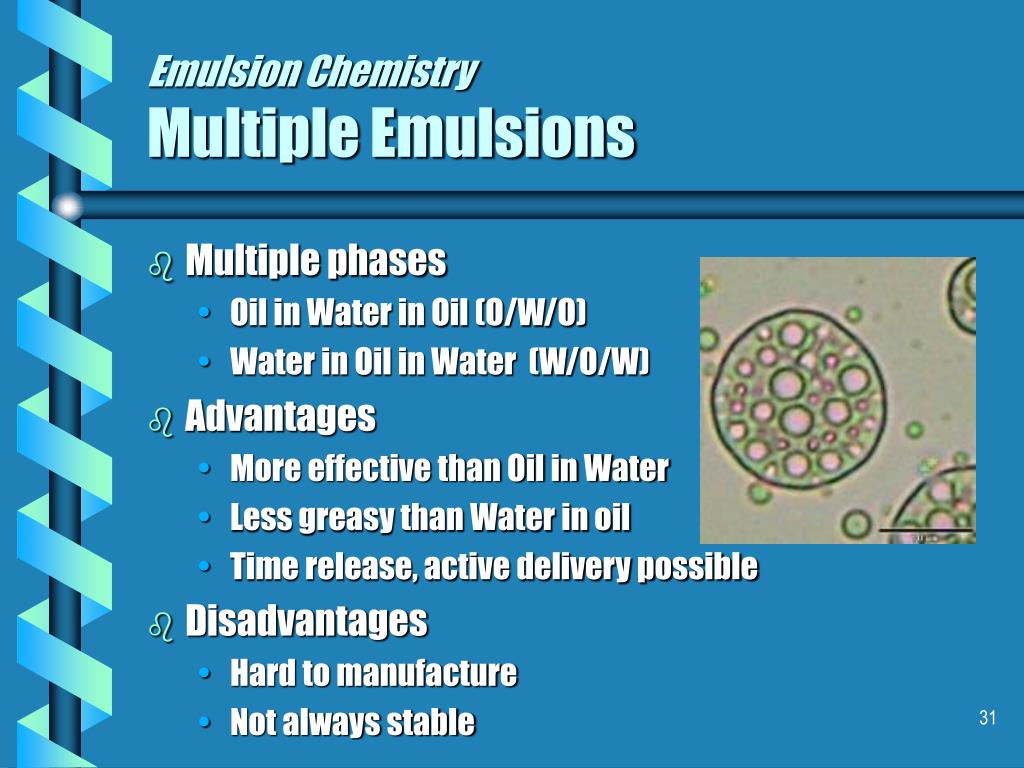
The particle size of a dispersed phase in emulsions may vary. If it is diluted it will appear blue while if it is concentrated, then it will appear yellow. Such an emulsion appears white if it scatters the light equally.

They show various colors depending on the dilution. The boundary between the dispersion phase and dispersed medium is called “interface”. Properties of emulsions are listed below –Įmulsions contain both a dispersed phase and a dispersion medium. Due to an increase in the viscosity of the medium, globules of the dispersed phase remain dispersed in the dispersion medium. Viscosity Modifications – Some emulsifying agents increase the viscosity of the medium. The emulsifying agent makes a film over one phase which makes globules of that phase and these globules repel each other. Repulsion Theory – According to repulsion theory repulsion force between the particles of the dispersed phase causes them to remain dispersed in the dispersion medium. Surface Tension Theory – According to surface tension theory, emulsification takes place by the reduction of interfacial tension between the dispersed phase and the dispersion medium. Mechanism of emulsification can be based on the following three theories – Many different chemical and physical processes and mechanisms can be involved in the process of emulsification. For example, in oil-water cutting fluid emulsion used for metalworking is formed by emulsifying oil in the water medium. Thus, we can say to emulsifying two immiscible liquids is called emulsification. In this process, one immiscible liquid is dispersed in another immiscible liquid. The process of formation of emulsions is called emulsification. The term emulsion comes from the Latin word ‘emulgere’ which means ‘to milk out’.Įxamples of Emulsions – Milk, mayonnaise, hand creams (lotions), Latex, cutting fluid, vinaigrettes, etc. For example, aerosol (Examples – Clouds, Fog, etc.) is also a colloidal solution in which the dispersion medium is gas and the dispersed phase is liquid. In colloidal solution, it is not necessary that both dispersed phase and dispersion medium will always be liquids. But it does not mean that all colloids are emulsions. The term emulsion is specifically used for mixtures in which dispersed phase and dispersion medium both are liquids. Generally, students get confused between the terms - emulsion, and colloid.

In this article we will discuss various emulsions, properties of emulsions, what is emulsification and its mechanism, and much more related to emulsification.Ī mixture of two or more liquids that are normally immiscible is called Emulsion.

These types of mixtures are known as emulsions. As we know oil and water are two immiscible liquids, but milk is an example of a mixture in which oil (fats) particles are suspended in water.


 0 kommentar(er)
0 kommentar(er)
